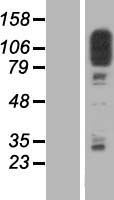Login
Registration enables users to use special features of this website, such as past
order histories, retained contact details for faster checkout, review submissions, and special promotions.
order histories, retained contact details for faster checkout, review submissions, and special promotions.
Forgot password?
Registration enables users to use special features of this website, such as past
order histories, retained contact details for faster checkout, review submissions, and special promotions.
order histories, retained contact details for faster checkout, review submissions, and special promotions.
Quick Order
Products
Antibodies
ELISA and Assay Kits
Research Areas
Infectious Disease
Resources
Purchasing
Reference Material
Contact Us
Locations
Orders Processing,
Shipping & Receiving,
Warehouse
2 Shaker Rd Suites
B001/B101
Shirley, MA 01464
Production Lab
Floor 6, Suite 620
20700 44th Avenue W
Lynnwood, WA 98036
Telephone Numbers
Tel: +1 (206) 374-1102
Fax: +1 (206) 577-4565
Contact Us
Additional Contact Details
Login
Registration enables users to use special features of this website, such as past
order histories, retained contact details for faster checkout, review submissions, and special promotions.
order histories, retained contact details for faster checkout, review submissions, and special promotions.
Forgot password?
Registration enables users to use special features of this website, such as past
order histories, retained contact details for faster checkout, review submissions, and special promotions.
order histories, retained contact details for faster checkout, review submissions, and special promotions.
Quick Order
SCP1 / SYCP1
synaptonemal complex protein 1
Major component of the transverse filaments of synaptonemal complexes (SCS), formed between homologous chromosomes during meiotic prophase.
| Gene Name: | synaptonemal complex protein 1 |
| Synonyms: | SYCP1, Cancer/testis antigen 8, SCP-1, Synaptonemal complex protein 1, SCP1, CT8, HOM-TES-14 |
| Target Sequences: | NM_003176 NP_003167.2 Q15431 |
Publications (13)
1
Heritable and stable gene knockdown in rats. Dann CT, Alvarado AL, Hammer RE, Garbers DL. Proceedings of the National Academy of Sciences of the United States of America. 2006 103:11246-51. (ICC; Rat)
[PubMed:16844779]
[PMC:PMC1544073]
2
Small ubiquitin-related modifier (SUMO)-1, SUMO-2/3 and SUMOylation are involved with centromeric heterochromatin of chromosomes 9 and 1 and proteins of the synaptonemal complex during meiosis in men. Brown PW, Hwang K, Schlegel PN, Morris PL. Human reproduction (Oxford, England). 2008 23:2850-7. (WB, IP; Human)
[PubMed:18694876]
[PMC:PMC2583944]
3
In vitro germ cell differentiation from cynomolgus monkey embryonic stem cells. Yamauchi K, Hasegawa K, Chuma S, Nakatsuji N, Suemori H. PloS one. 2009 4:e5338. (ICC; Primate)
[PubMed:19399191]
[PMC:PMC2671468]
☰ Filters
Products
Proteins
(3)
Type
Over-Expression Lysate
(2)
Recombinant
(1)
Target
SCP1 / SYCP1
(3)
Publications
No
(3)
Tag
Myc-DDK (Flag)
(3)
Species
Human
(2)
Source
293T Cells
(1)
HEK 293 Cells
(2)

HEK 293 Cells
Myc-DDK (Flag)
114 kDa
100 µg/$710

HEK 293 Cells
Myc-DDK (Flag)
114 kDa
20 µg/$1,107

293T Cells
Myc-DDK (Flag)
114 kDa
20 µg/$215
Viewing 1-3
of 3
product results
If you do not find the reagent or information you require, please contact Customer.Support@LSBio.com to inquire about additional products in development.









